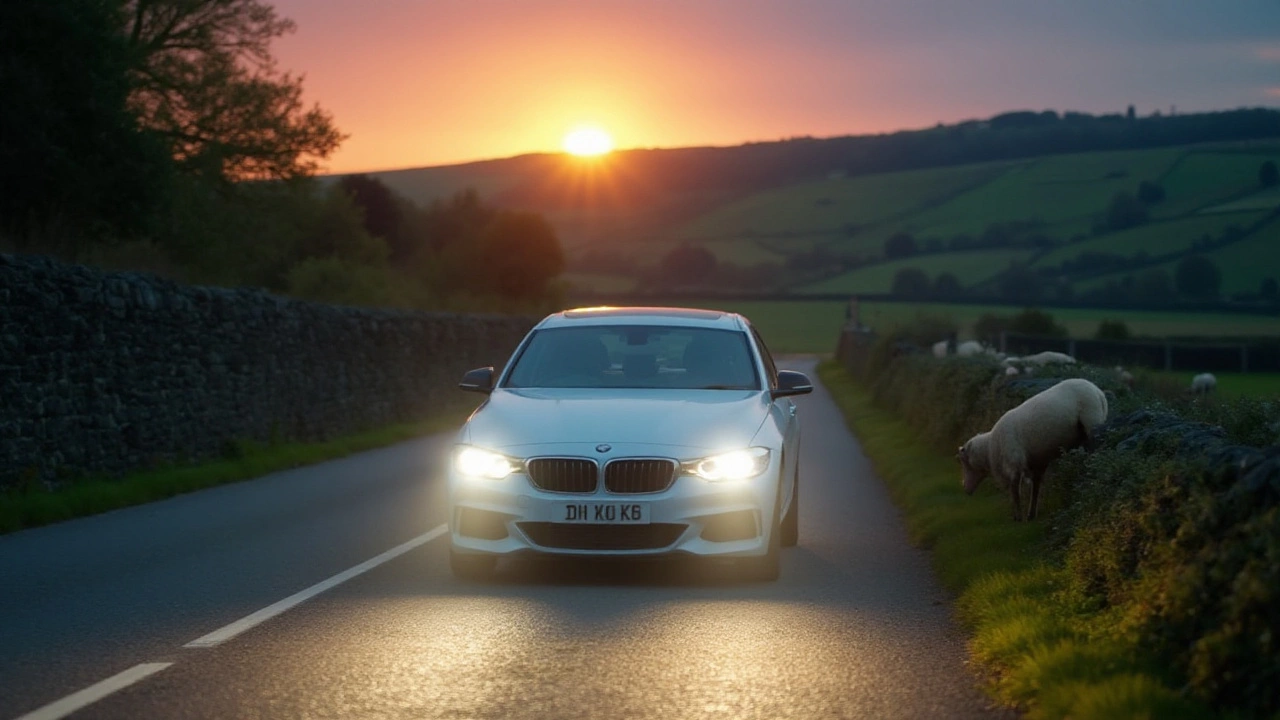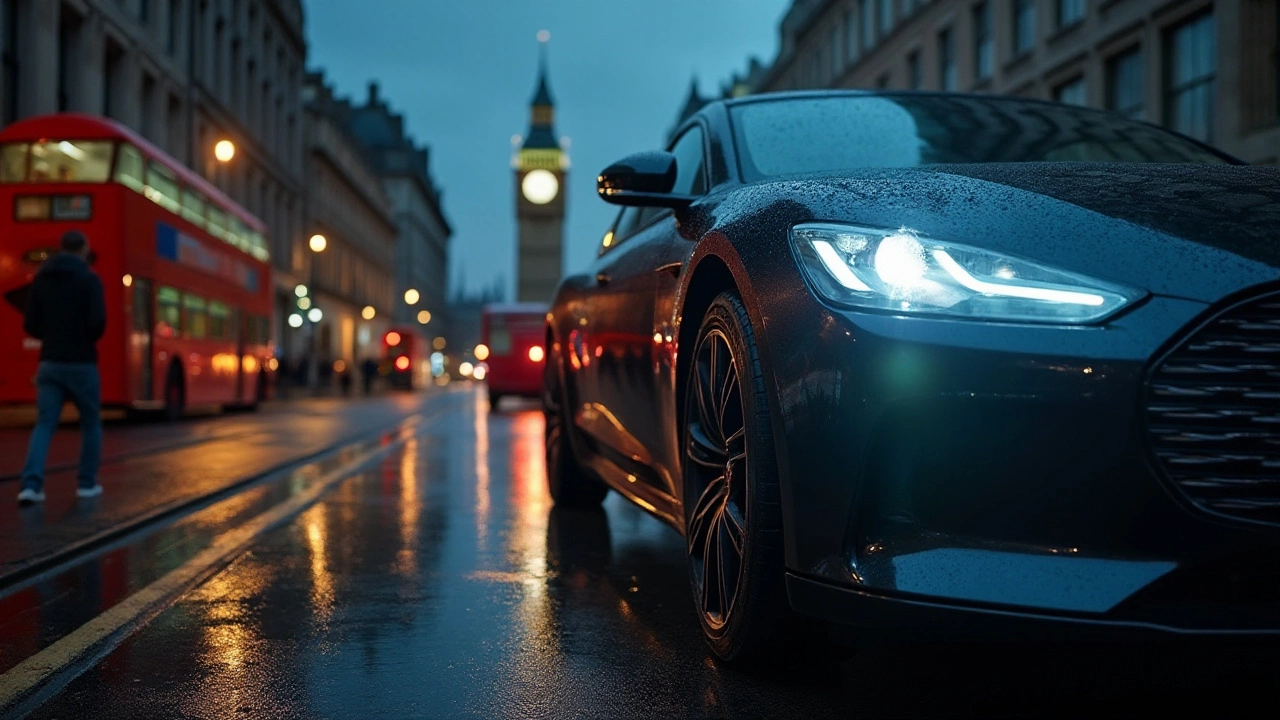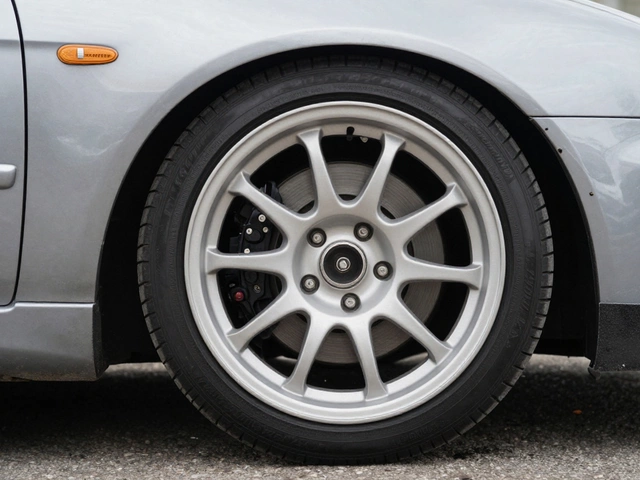Have you ever driven down a pitch-black road and wished your headlights could cut through the darkness just a little better? You're not alone, and that's why many drivers are making the switch to LED headlights—those bright, white beams that seem to turn night into day.
LED headlights have found their way to the forefront of automotive lighting thanks to their efficiency and performance. They promise more than just good looks, but tangible benefits like a longer lifespan and superior illumination. For those thinking about making the switch, it's crucial to arm yourself with the right information. Whether you're a seasoned auto enthusiast or someone who's simply curious about upgrading, understanding the ins and outs of LED headlights is key to making the right decision.
- Understanding LED Headlights
- Benefits of Switching to LED
- How to Install LED Headlights
- Legal and Practical Considerations
Understanding LED Headlights
In the automotive world, LED headlights are not just a trend—they represent a significant technological advancement in car lighting. LEDs, or Light Emitting Diodes, have revolutionized how we perceive nighttime driving. These bulbs use semiconductors to emit light when an electrical current passes through them, offering unparalleled efficiency compared to the filament-based halogen bulbs that have been a standard for decades. The cool thing about LEDs is their ability to provide a bright, focused beam of light while consuming far less energy than traditional options.
A noteworthy advantage of LEDs is their longevity. On average, an LED headlight can run up to 50,000 hours, which, in layman's terms, outlasts halogens by a significant margin. This means less frequent bulb changes and reduced maintenance costs over the lifetime of your vehicle. Moreover, LEDs are designed to withstand the harsh conditions found on the road, including vibrations and temperature fluctuations, much better than their more fragile precursors.
LEDs are also faster to reach their full brightness, enhancing safety by providing immediate alert signals when the headlights are turned on. This quick response can be crucial in moments where visibility is suddenly lost or during poor weather conditions where immediate clarity is needed. Another benefit is the flexibility in design—car manufacturers have more leeway to create innovative headlight shapes and styles, enhancing the vehicle's aesthetic appeal.
A report from the Department of Energy highlights that "LEDs use at least 75% less energy, and last 25 times longer, than incandescent lighting." This fact underscores the ongoing shift towards more sustainable automotive technologies. Manufacturers and consumers alike are increasingly drawn to the energy savings and environmental benefits offered by LED lighting. From an economic perspective, the energy efficiency of LED installation translates into substantial fuel savings over time. This not only helps in lowering vehicle expenses but also contributes positively to the environment by reducing carbon emissions.
"LED technology continues to be a game changer in the lighting industry, driving performance and functionality while reducing environmental impact," remarks a recent report by the Automotive Lighting Coalition.
When it comes to color temperature, LED headlights stand out again. They often emit a cooler, bluish-white light, which closely mimics natural daylight and can reduce eye strain during nighttime driving. This natural-like brightness makes it easier to spot pedestrians, road hazards, and street signs, effectively increasing road safety. The color options also add an aesthetic appeal, as many drivers prefer the modern look that LEDs provide, compared to the yellow hue typically associated with older lighting technologies.
These technical and practical attributes have made LED headlights a popular choice among new car buyers and those looking to upgrade their existing vehicles. However, understanding their workings deeply helps enthusiasts appreciate their value and potential road benefits. As the automotive industry continues to innovate, LED lights remain a beacon of future mobility, lighting the path towards safer and more efficient driving experiences for everyone.

Benefits of Switching to LED
Thinking of switching your headlights to LED? It's not just about joining the latest automotive trend; it's about making a smart choice for your vehicle's lighting system. One of the standout benefits is the energy efficiency of LEDs. Unlike traditional halogen bulbs, LEDs convert most of their energy into light rather than heat, which means they use less power. This efficiency translates into less strain on your vehicle's battery, potentially extending its life. Many car owners are surprised to find out that LEDs can last up to 25,000 hours or more, significantly outliving halogens that typically last around 1,000 hours.
"LED technology not only provides an unparalleled luminous output but it also aligns with the automotive industry's push towards more sustainable energy solutions." - John Smith, Automotive Lighting Expert
Besides efficiency, the intensity and quality of light produced by LED headlights is noteworthy. The luminous clarity they offer is closer to daylight, providing a better quality of illumination that enhances your visibility and reaction time. This is especially crucial during inclement weather conditions when visibility is compromised. While halogens emit a yellowish light that struggles to penetrate fog and rain, LEDs cut through these elements with clearer, more effective lighting.
Also, don't forget about the design versatility of LED headlights. They come in a variety of styles that allow for a customized look to match your car's aesthetic. Manufacturers appreciate that LEDs can be designed to fit virtually any headlight housing due to their compact size. This allows for sleek, modern designs that other lightbulbs simply can't achieve.
There's a financial angle too. Given their longevity and reduced power consumption, LEDs prove to be more cost-effective in the long run. While the initial investment may be higher compared to halogens, the savings from reduced replacements and energy efficiency can offset the costs. An interesting fact for the economically minded: LEDs can cut energy use by more than 80% compared to their incandescent counterparts. The return on investment, considering both time and money, tends to sway many to make the smart switch to LED.

How to Install LED Headlights
Making the leap to LED headlights isn't just about boosting your vehicle's style quotient—it can enhance nighttime visibility and efficiency, too. Installing these modern marvels can seem daunting at first glance, but with the right approach and tools, it's a weekend project many can tackle without professional help. First things first, gather the essentials: your LED headlight kit, typically composed of bulbs, connectors, and occasionally a few resistors to prevent hyper-flashing. Depending on your vehicle model, the installation might call for a few extra bits like screwdrivers or pliers. Keep your car manual handy just in case.
The initial step in any headlight swap is safety. Ensure your vehicle is parked on a flat surface with the engine off and keys removed. It's good practice to disconnect the battery, preventing any chance of electrical mishaps. Once ready, pop your car’s hood and locate the back of the headlight assembly—usually accessible after removing some protective covers. You might need to twist and pull gently to release the current bulbs. As you perform this maneuver, remember that touching the new LED bulbs directly with your fingers can reduce their lifespan, so handling them with gloves is a wise choice.
With the old bulbs out, insert the new LEDs in their place, aligning them correctly in the headlight housing. This part necessitates a bit of patience and precision; improper installation can lead to misdirected beams or less-than-ideal performance. Firmly secure them, making sure the alignment promotes an even light output. Should your vehicle need any resistors or adapters to prevent flickering, you'll find that information in your LED kit manual. Typically, these are easily plugged in between the car’s wiring and bulb connectors.
After securing the LEDs, reattach any protective covers previously removed and reconnect your vehicle’s battery. Now's the moment of truth: switch your headlights on to test them. Assess the alignment and brightness, and if necessary, adjust the beams to ensure they illuminate the road correctly, without blinding oncoming traffic. Keep in mind that these headlight conversion tweaks might need some trial and error to perfect, ensuring the light pattern is safe and effective.
As an added tip, if you find yourself unsure at any step, there are plenty of online forums with vehicle-specific advice. Automotive enthusiast communities often share detailed guides and videos for headlight upgrades for just about every make and model out there. As car lighting expert Joey M. has said, "LEDs are the future of automotive lighting, marrying style with unparalleled efficiency."
“Installing LEDs isn't only about shining brighter—it's a shift to more reliable, environmentally-friendly car lighting.”Give yourself the edge with LED installation and enjoy the night drives with a newfound confidence.

Legal and Practical Considerations
Before taking the plunge into the world of LED headlights, it's crucial to understand both the legal landscape and practical aspects that come with this transition. Laws regarding vehicle lighting can vary significantly depending on where you live. In the United States, for instance, the Department of Transportation sets guidelines that dictate the type, color, and intensity of car lights. It's vital to ensure that any modifications meet these requirements to avoid potential fines. In Europe, the standards are different yet equally stringent—they require an E-marking to certify that the lights comply with safety standards.
One must consider that not all LED headlights on the market are street legal. Some models are designed for off-road use only and can be excessively bright or misaligned, causing glare for other drivers. To avoid this issue, purchasing LEDs from reputable suppliers who provide documentation of legality and compliance is a wise move. As a tip, always check for certifications and reviews; these can be the game-changer in ensuring you're abiding by the law when revamping your car lighting system.
Practical considerations often revolve around the installation process itself. Most vehicles are originally equipped with halogen bulbs, and replacing those with LEDs might sound straightforward but can sometimes require additional equipment. You may encounter the need for conversion kits to fit LED headlights properly into older car models. This can inflate costs and introduce additional elements to your setup. While many car enthusiasts opt to perform the installation independently to save on labor costs, it's important to stress that improper installation can lead to problems such as flickering or uneven light distribution.
Professional Installation versus DIY
Deciding between a DIY approach and getting professional help can be tricky. Handling electrical components requires a good grasp of your vehicle's wiring system and the compatibility of the products. If you're the type who enjoys a hands-on approach, you might relish the challenge of a do-it-yourself project. However, if you're not confident in your technical abilities, seeking professional assistance can save you from potential headaches down the line. Professionals can diagnoses issues instantly, ensuring everything works as it should and complies with legal standards."Switching to LED headlights isn't just a technological upgrade; it’s a way to enhance your driving experience and improve road safety," says Alex Thompson, a well-known automotive engineer. "The key is ensuring everything, from legality to installation, is handled correctly."It's paramount to balance the cost and your comfort level with the technical details, as both play a significant role in making this switch efficient and compliant.






